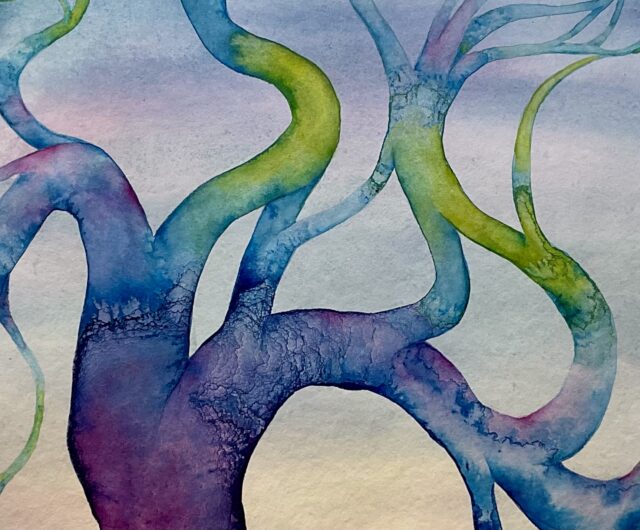
This one continues next month! Look for Part 2’s answer in May!
ANSWER TO MYSTERY TECHNIQUE #125, PART 1:
No masking is needed for this technique! Painting your subject before the background can be easy if you paint the shapes with acrylic and then switch to watercolor for the background.
First I used a brush loaded with water to draw a series of branching shapes on dry paper, modifying them by blotting parts away with a dry paper towel and using a pipette to selectively add more water. Next I dropped diluted acrylic ink into the watery branches, mixing the colors wet-in-wet. As the water slowly evaporated overnight, it left behind a record of its interactions with the paint and paper:
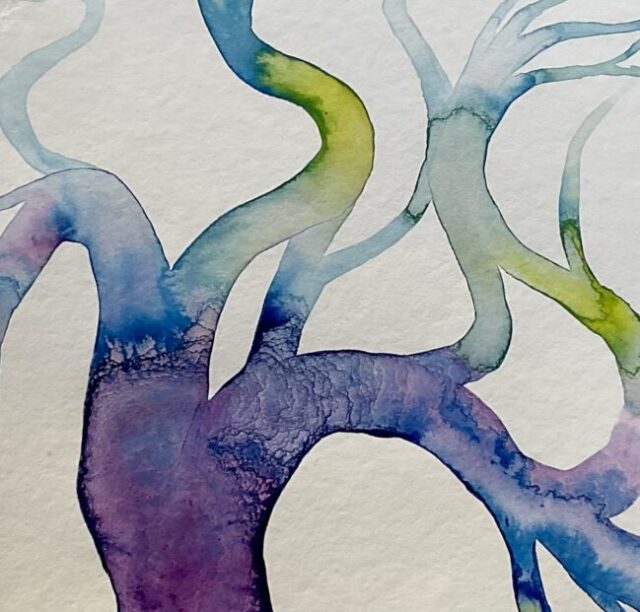
I painted the background with 2 layers of watercolor. First I wet the entire piece of paper, which had no effect on the acrylic; then I mixed Winsor Yellow and Permanent Rose over parts of the painting and wiped the watercolor paint off of the acrylic shapes with a damp brush and sponge. Since the watercolor didn’t want to stick to the acrylic, it was easy to remove:
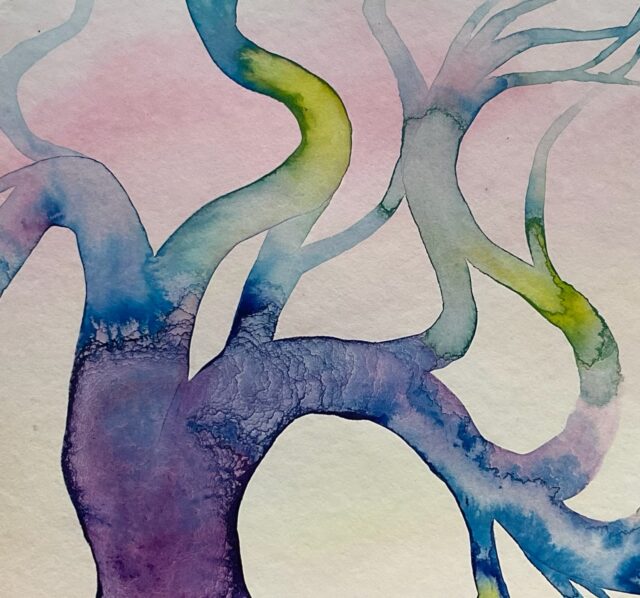
After this layer dried, I rewet the entire painting again and added diluted Faience Blue (Maimeri Blu brand):
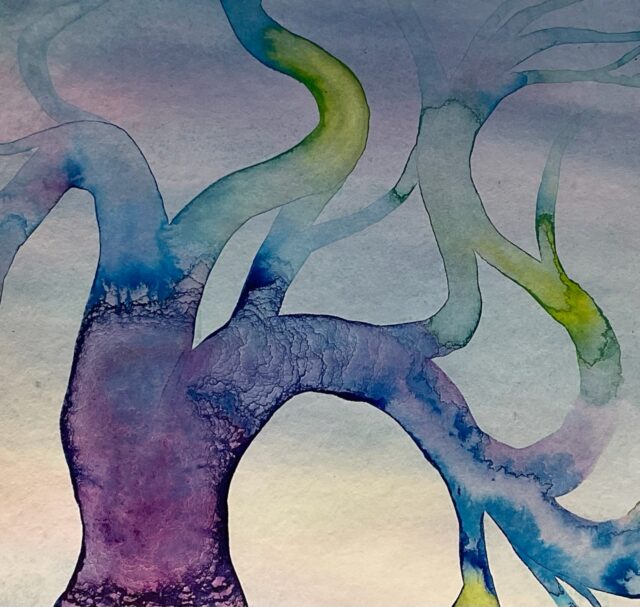
The branching shapes also have more than 1 layer. You can learn more next month in Part 2.

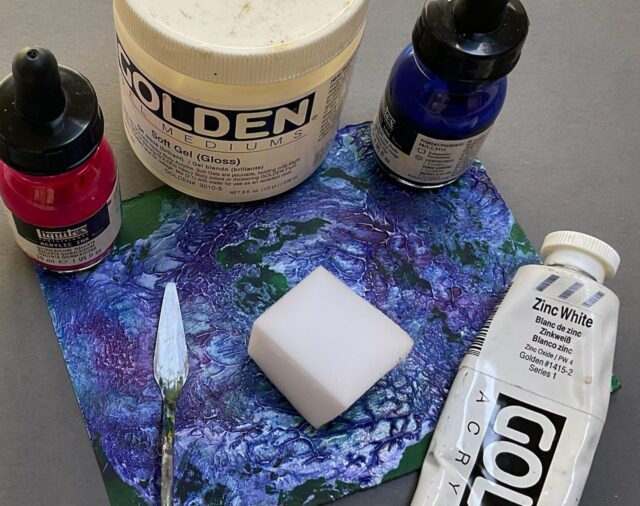
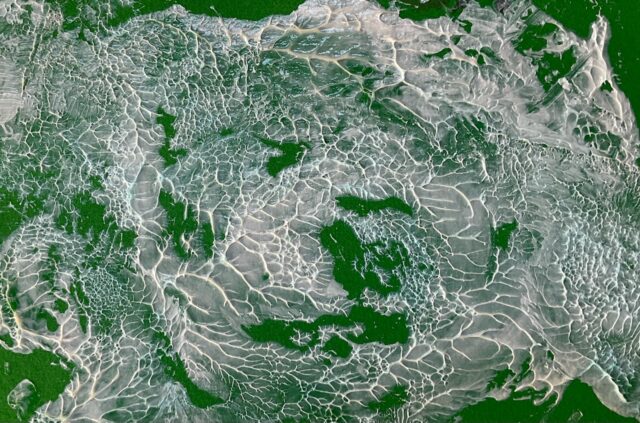
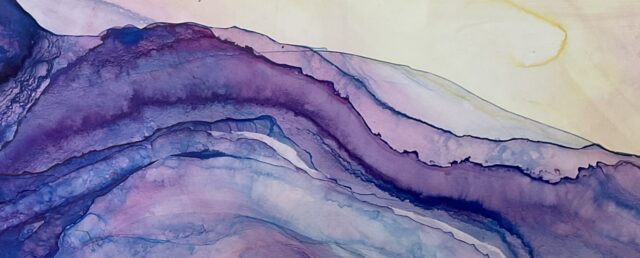
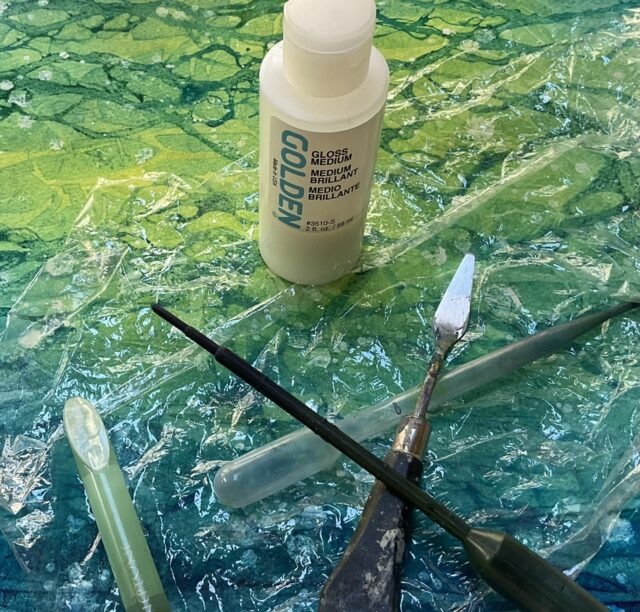
 Home
Home